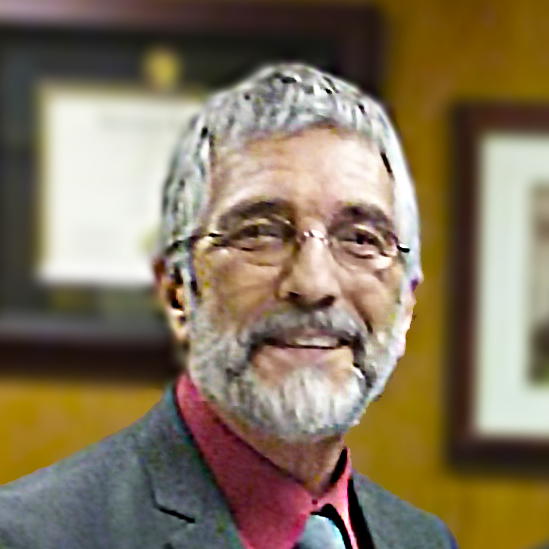
A Note from the Chair of CPFA
Dear Readers,
In the past, I have always provided my “Report” on CPFA’s efforts in the fight for part-time faculty rights in California. However, this time I feel compelled to use my platform to share some of the poignant reactions of other part-timers in response to the Governor’s veto of AB 1856 and the widely circulated article about the veto by Thomas Peele for EdSource. If you have not done so already, be sure to read Peele’s full article and Governor Newsom’s official veto message, as well as the Letter of Support for AB 1856 that I wrote back in September to the Governor urging him to pass AB 1856 on behalf of the thousands of part-time faculty in the California Community Colleges System continuing to struggle to piece together a full-time salary.
Yours sincerely,
John Martin
Executive Council Chair
California Part-time Faculty Association
In response to Thomas Peele’s EdSource piece “Newsom rejects second effort to make more community college adjunct faculty eligible for health care” :
There is a major misconception perpetrated by this piece that has been present in the Governor’s vetoes of both this year’s AB 1856 and last year’s AB 375.
Peele writes: “Assembly Bill 1856, sponsored by Assembly member Jose Medina, D-Riverside, would have allowed adjuncts to teach as much as 85% of a full-time teaching load, or roughly four classes a term, a level that would qualify them for health care coverage.”
Teaching at 85% would not necessarily qualify part-time instructors for health care coverage. Here’s why: The threshold for Affordable Care Act (ACA) eligibility is 30 hours per week assuming a 40-hour work week. Assuming teaching 15 credit hours as a 100-percent full-time weekly teaching load, 85 percent of that full-time teaching load would be 12.75 hours weekly (15 x 85% = 12.75). The 12.75 classroom hours, with the IRS multiplier of 2.25 (to convert classroom hours to hours per week) results in 28.7 hours, which is less than the 30-hour per week ACA threshold. If this calculation is faulty, I and others who have articulated it for some time, would hope that it might be corrected, not ignored.
Also, it is patently absurd to suppose that all 38,000 California part-time instructors would somehow qualify for health insurance with the passage of AB 1856 and encumber the state with up to $440 million as the Chancellor’s office asserted last year as a scare tactic. To a cynic, the Governor’s $200 million might seem like hush money, as if to say, “Hey, here’s $200 million, so stop your bellyaching about not being able to work more than 67 percent in a given college district.” Both AB 1856 and last year’s AB 375 are about workload, not health insurance.
~JL
The underlying assumption being made by the Governor and CFT (sponsor of the bill) is that an 85% workload translates in not more than 30 hours of work each week and so would cause the Affordable Care Act to kick in mandating that adjunct instructors would get health benefits paid for by the district. Seems right on its face but it’s not correct in actuality. (See above comment from JL)
Health care is a good thing, but this bill does not induce any added health care cost onto the Community College System, even if somehow, all of the adjunct faculty were to magically upon its passing start teaching an 85% load and somehow all of them needed to get health coverage from the district (instead of from a spouse for example). At the end of the day, this is essentially a zero cost bill and has nothing to do with health care. How did the governor and CFT get this so incredibly wrong?
~SD
I wrote this back in August. Reject the California Community College Chancellor’s Numbers on AB 1856.
~ GJ
“The California Federation of Teachers (CFT) pushed hard for the bill as part of an initiative on adjunct health care.” If that’s true, the CFT has big time missed the mark. An 85% workload for adjunct instructors does not put them over the 30 hours per week threshold that would cause the ACA to kick in! A full-time teaching workload is not 40 hrs. per week! These are not time card punching laborers. Based on IRS rules, an 85% workload for an adjunct instructor translates into about 28.7 hours per week. Healthcare is a moot issue here! Bringing up healthcare and the ACH is either an act of ignorance or subterfuge.
~SD
This headline (EdSource article) reflects a slight oversimplification of what this bill is really about. While allowing contingent faculty to teach more hours at one district would probably result in more folks qualifying for health benefits that is not the primary reason for the bill.
… Advocates for lifting this cap on teaching loads can list many reasons for doing so, in addition to making it easier to qualify for benefits: spending more time teaching and less time in traffic; being more invested in a single campus rather than spreading energy too thinly; and, importantly, being more available to students rather than having to run off to teach elsewhere.
There is really no reason for any cap. Many tenured faculty routinely teach much more than a standard full-time load. The current 67% cap on contingent faculty is just plain stupid.
~JG
“It is patently absurd to suppose that all 38,000 California part-time instructors would somehow qualify for health insurance with the passage of AB 1856 and encumber the state with up to $440 million as the Chancellor’s office asserted last year as a scare tactic.” [From a readers’ comment]
BOOM!! That is exactly correct. In my department we have 10+ part time instructors, and only 2-3 of them are even close to pushing the current maximum load, and would take on additional sections if they could. Certainly in STEM, many part timers are subject matter experts with day jobs, or retired folks who like sharing their expertise.
So PT’s fall into 2 groups … those who think of themselves as teachers and wanted AB 1856 passed, and those who are teaching 1-2 sections a term and not looking for anything more.
Since the number of sections is presumably unaffected, the only impact of this bill would have been to allocate a few more sections to the teachers under the Section limit, at the expense of the subject matter experts, and then, where the load crossed the magic line, pick up health care for only those PT who think of themselves primarily as teachers.
So my question is … do we have any idea at all about how many of the 38,000 PTs are actually affected by this veto? For the folks it does affect, it’s obviously a huge deal, but how many of those folks are there? I’m guessing around 10-15 thousand PT’s at most are pushing the load limit. And even there, in a period of shrinking student enrollment, how many would have the opportunity to increase the number of sections they teach if the bill had passed??
What all this seems to point to, is that the financial impact to the state of AB 1856 has been blown way out of proportion…
~RK
Below is what I just received from the California Federation of Teachers (CFT): The veto is labeled “disappointing news.” The reason given in the story makes Newsom come across as being cautious and reasonable. “Citing cost concerns, in his veto message the Governor indicated that he wanted to see how the $200 million for part-time faculty healthcare is implemented before committing to increasing the workload cap.” Is the CFT being an apologist for the governor? Cost concerns when the state recently had a $97 billion surplus? 1% of which is $970 million.
~RB
…the Governor says that “…it is unknown how many community college part-time faculty will benefit from the $200 million now available to districts”…so let’s err on the side of thoughtless inhumanity and continue forcing these little people to scramble around to make a living and spend more time on freeways than in classrooms! Heaven forbid some of them..and sadly ONLY some…. might also get health benefits!
~DM
This governor is dead to us. The veto message makes no sense, since districts are not even required to give us assignments of 80-85%. The bill is merely removing an artificial barrier created by the state….
~GG
…About the intent of AB 1856, what is known is that depriving workers of work is immoral. We should not be quibbling about whether the cap should be 60%, 67%, 85% and or some future 92% proposal. There should be no cap whatsoever. Indeed, depriving an individual of work who is at 67% is not unlike depriving a person of work because of gender or race or religion or hair style.
~ JL
“About the intent of AB 1856, what is known is that depriving workers of work is immoral…
… The two-tied system, at its very core, is exploitative and reprehensible. Part-time faculty would have no problem being held to 67% IF that 67% allowed them to have true parity in the form of a living wage, health insurance comparable to that of their full-time peers, freedom from at-will precarity, and adequate retirement by the end of their careers. Better yet, an overhaul of the entire system could obliterate the two tiers forever and create something sustainable and equitable for all as opposed to one built on the backs of academic equals. If this could be done, PT faculty would not be scrambling to find ways to make the broken system just a little bit better for them.
~KI
Last night I got a text from Gavin Newsom that started out, “Gavin Newsom here, writing to ask if ANYTHING I can say to convince you to make a contribution to my re-election campaign before our September fundraising deadline ends.” Then a bunch of blather about fundraising goals, blah, blah, blah, etc. I responded, “Sign AB1856!”
~SB

